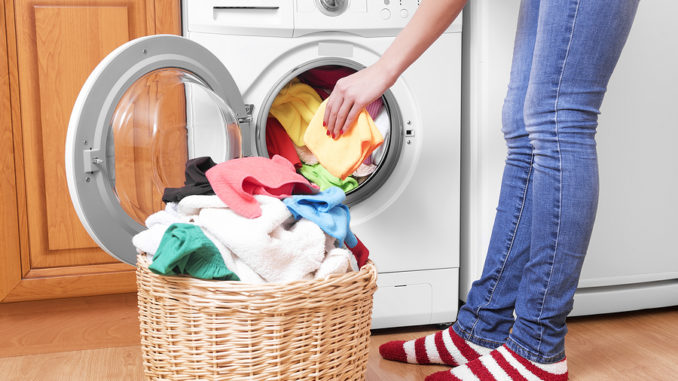
To many of us, laundry is the least preferred household chore. It takes so much of our time – from sorting down to ironing all clothes. And it can easily be a major inconvenience once the washing machine suddenly conks out! I guess not many of us want (or know how) to do the laundry manually.
To avoid getting in this predicament, make sure to follow these 12 washing machine maintenance tips:
1. Ensure the water hose is free of defects such as leaks, cracking, bulging and fraying. In case the hose shows problems, replace it immediately. A repair services company from Orlando recommends replacing the hose at least every three to five years.
2. Keep the lint filter clean and free from debris. Read the user manual to find where the lint collector is located and how to clean it.
3. Clean the exterior of the machine by wiping it with damp cloth followed by a damp cloth. Its exterior uses enamel and without proper care, it can begin to chip, dull, and look untidy. Detergents contain chemicals that can affect the exterior of your washing machine. Although the appearance doesn’t actually affect its operations, it can make the unit look much older.
4. Keep the machine at least five inches away from the wall to avoid kinking the hose. Regularly inspect the hose for possible kinking.
5. Keep the lid open for at least thirty minutes to dry out the unit. This prevents the washing machine from developing mildew and musty odor. For machines with front loader, cleanse the rubber seal and wipe it dry after completing your laundry.
6. Use the right amount and type of detergent. You can check the user manual to see the recommended detergent for your machine. Using excess soap can lead to residue build-up and hastens the wear and tear of the machine. Choice.com.au, an Australia-based consumer advocacy group, recommends using high-efficiency detergent for high-efficiency washing machine to avoid over-foaming and prevent damaging your unit.
7. Cleanse the washing machine with recommended washing machine cleaner. Alternatively, you can make your own solution by combining baking soda, vinegar and hot water. Pour the washing machine cleaner while the unit is turned off and with an empty load. Do this at least once a month to rinse away detergent residue and buildup.
8. Make sure the machine is level to avoid rocking or vibration while it’s running. Constant vibration can potentially damage the electronic parts of the machine. Most units have adjustable legs to ensure that they are balanced.
9. Carefully check your clothes, particularly those with pockets, before loading into the washing machine. Small items, such as coins, buttons, pins, keys, and clips, can get stuck inside the drain pipe, shatter the glass of a front loader machine, or damage the drum. Not only can these tiny items damage the machine, it can damage your clothes as well.
10. Remove tiny particles inside of the washing machine. Once the unit’s interior is completely dry, use a vacuum to remove cloth fibers, hair, lint, and other fine materials. If not removed, these tiny particles can build up, lead to blockage and worst damage your unit.
11. Place a drain pan beneath your washing machine. Recommended especially for laundry rooms not located on the ground floor, a drip pan not only protects the floor from possible damage due to water leaks but can also help detect possible leaks early. Usually, homeowners are unaware that their washing machine problems because the leaks automatically seeps through the flooring. With a drip pan, the water gets collected and signals you of possible leaking.
12. Never overload your washing machine. If you have a pile of clothes to wash, especially the bulky or heavy items, consider splitting them into batches to avoid overloading the washing machine. Do not go beyond the recommended amount of water.
Lastly, be attentive to your washing machine. If you notice any changes in its operations, such as its sound, if it moves a lot while working or the electronics display shows error, immediately troubleshoot the problem. Most of the time, you will only need to refer to the user manual to correct these problems. If your initial troubleshooting attempts don’t solve the problem, you can ask the help of a qualified appliance services company. With early detection and diagnosis, you can avoid major expenses as well as the hassles of a washing machine that suddenly stops working.




Be the first to comment